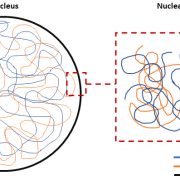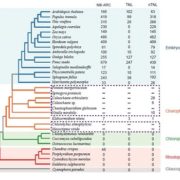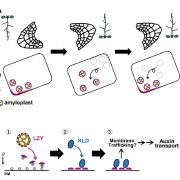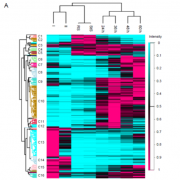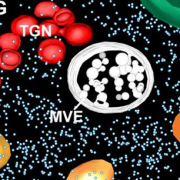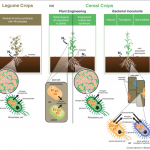Review. Small RNAs and extracellular vesicles: New mechanisms of cross-species communication and innovative tools for disease control (PLOS Pathogens)
 We have only recently begun to appreciate the phenomenon of cross-species or cross-kingdom small RNA transfer, and its applications. Using examples from plants and animals, Cai et al. summarize how some pathogens have evolved the capacity to introduce small RNAs into their host to suppress host defense responses, for example by hijacking host small RNA machinery (e.g., AGO proteins). Conversely, there is also evidence that some plants can secrete extracellular vesicles carrying small RNAs that target pathogen virulence genes. This review also describes the possible applications of small RNAs in plant protection. For example, a plant could be engineered to produce an anti-virulence small RNA, as in host-induced gene silencing (HIGS). Or, to avoid the need for genetic modification of plants, the small RNAs could be provided exogenously, as in spray-induced gene silencing (SIGS), perhaps with the small RNAs being stabilized on clay nanosheets. (Summary by Mary Williams) PLOS Pathogens 10.1371/journal.ppat.1008090
We have only recently begun to appreciate the phenomenon of cross-species or cross-kingdom small RNA transfer, and its applications. Using examples from plants and animals, Cai et al. summarize how some pathogens have evolved the capacity to introduce small RNAs into their host to suppress host defense responses, for example by hijacking host small RNA machinery (e.g., AGO proteins). Conversely, there is also evidence that some plants can secrete extracellular vesicles carrying small RNAs that target pathogen virulence genes. This review also describes the possible applications of small RNAs in plant protection. For example, a plant could be engineered to produce an anti-virulence small RNA, as in host-induced gene silencing (HIGS). Or, to avoid the need for genetic modification of plants, the small RNAs could be provided exogenously, as in spray-induced gene silencing (SIGS), perhaps with the small RNAs being stabilized on clay nanosheets. (Summary by Mary Williams) PLOS Pathogens 10.1371/journal.ppat.1008090


